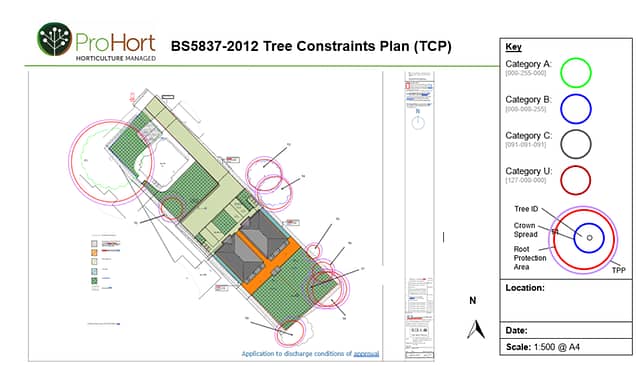Tree Constraints Plan
What is a Tree Constraints Plan?
Tree constraints plans (TCP) are usually part of the Tree survey which is carried out to the BS 3857:2012 standard. The information is usually displayed upon a plan and within a chart, the plan is drawn using CAD and this is then layered directly on to a topographical site survey. It would include the; Tree locations, Root Protection Area, Crown spreads, along with pictures of the trees in relation to the site.
Why Are Tree Constraints Plans Useful?
The dimensions of all the trees are included within the chart and these are then plotted onto the plan. This enables a realistic shape of each tree to be plotted, additionally the root zone is also plotted along with a root protection area around each tree. This in turn assists the architects when setting out their building, roadways, other hard paved areas and street furniture.
As part of the Tree constraints plan we would categorise each tree from A to C and U if the tree is dead or needs to be removed immediately. Trees that are categorised as “A” are excellent specimens and add significant amenity value or are particularly rare. Category ”B” trees are those that are not quite to the same standard as a “A” tree but are nevertheless important trees within the landscape, add a good amount of amenity value and have a significant life span and as such would ideally be kept. Category “C” trees are low in value, or may have a significant defect with limited life span.
Please see below for a typical Tree Constraints Plan:

Contact Us For a Tree Constraints Plan Today!
If you need any assistance or advice with regards a Tree Constraints Plan especially if required for planning permission. Please do get in touch on 01782 479479 (Head Office) or drop us an email on: [email protected]
